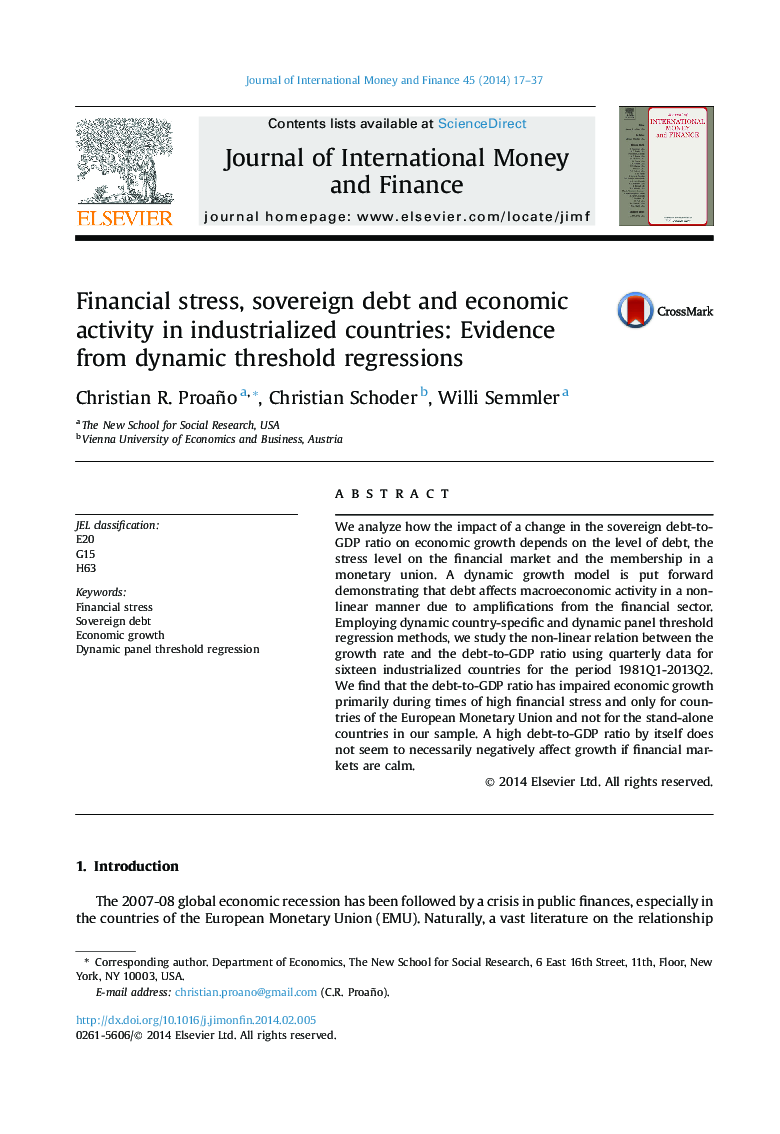| Article ID | Journal | Published Year | Pages | File Type |
|---|---|---|---|---|
| 963458 | Journal of International Money and Finance | 2014 | 21 Pages |
Abstract
We analyze how the impact of a change in the sovereign debt-to-GDP ratio on economic growth depends on the level of debt, the stress level on the financial market and the membership in a monetary union. A dynamic growth model is put forward demonstrating that debt affects macroeconomic activity in a non-linear manner due to amplifications from the financial sector. Employing dynamic country-specific and dynamic panel threshold regression methods, we study the non-linear relation between the growth rate and the debt-to-GDP ratio using quarterly data for sixteen industrialized countries for the period 1981Q1-2013Q2. We find that the debt-to-GDP ratio has impaired economic growth primarily during times of high financial stress and only for countries of the European Monetary Union and not for the stand-alone countries in our sample. A high debt-to-GDP ratio by itself does not seem to necessarily negatively affect growth if financial markets are calm.
Related Topics
Social Sciences and Humanities
Economics, Econometrics and Finance
Economics and Econometrics
Authors
Christian R. Proaño, Christian Schoder, Willi Semmler,
